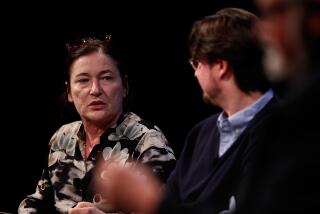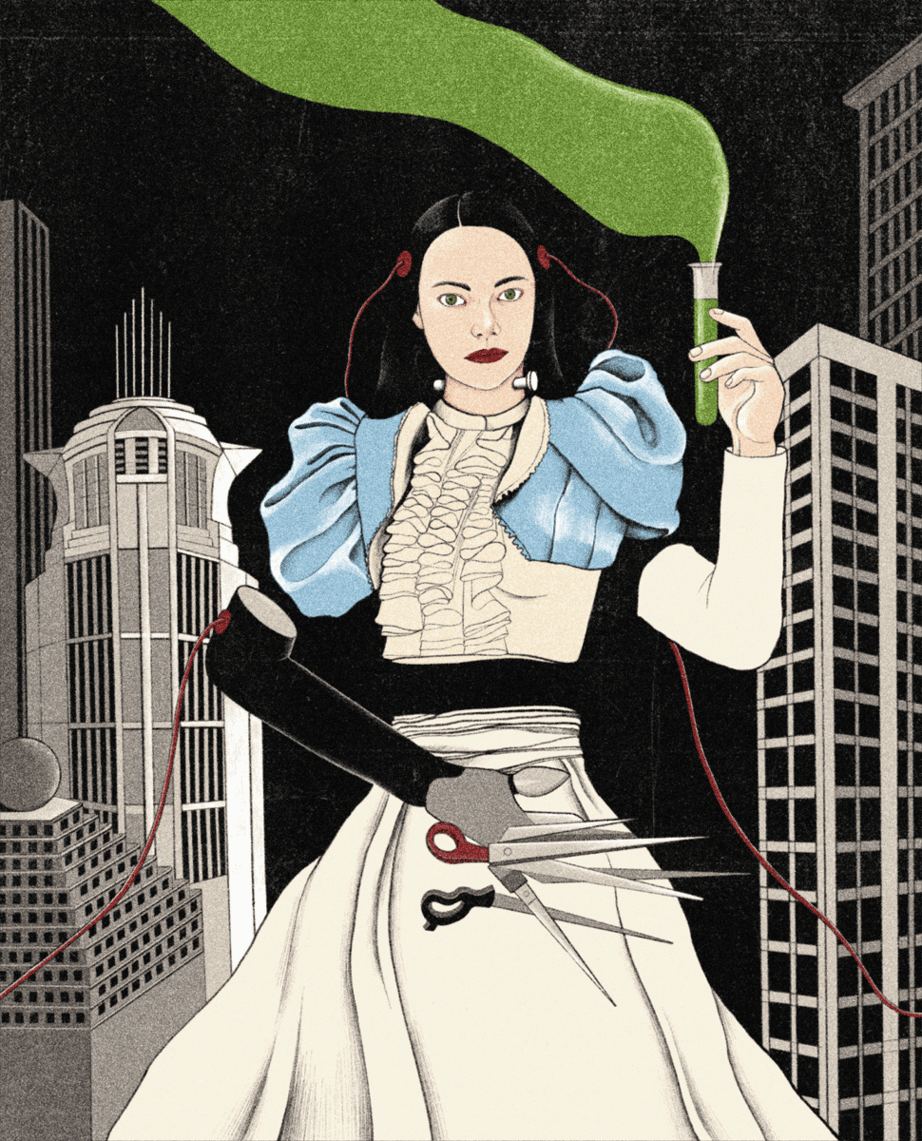Two 19th century Gothic classics get Goth YA makeovers
Those thoroughly satiated with beach days and summer blonds can seek refuge of a darker sort in two new novels for young adults in which classic 19th century Gothic novels get a postmodern, post-punk makeover influenced by the aesthetic of their 20th century pop culture counterpart, Gothic rock.
Australian poet and fantasy novelist Alison Croggon starts her novel “Black Spring” with the plot skeleton of Emily Brontë’s “Wuthering Heights,” then grafts on witches, wizards and a little contemporary feminist theory. Los Angeles-based graphic novelist Gris Grimly, known for illustrating books for children and teens that suit his grim namesake, liberates the crew from Mary Shelley’s “Frankenstein” of their Edwardian-era frippery and outfits them in leather and lace sleek enough to make the scene opening for Siouxsie and the Banshees.
“Black Spring” is structured almost exactly like the original “Wuthering Heights”: A traveler stops at a decrepit mansion ruled by a cruel tyrant abusing a much younger woman he claims to be his wife. That night, he sees a disheveled, seemingly mad woman who looks like an older version of the first. A female servant agrees to tell him the whole sorry tale as she witnessed it: A noblewoman and her foster brother fall in love as children; she marries another; he returns; vengeance, death and ruin ensue.
Croggon diverges from Brontë by giving her characters vaguely Slavic names and swapping out the English moors for a supernatural land ruled by a wizard named Ezra. Unlike Brontë’s Catherine with her fair skin and “flaxen ringlets,” Croggon’s noblewoman, Lina, is black-haired with “large and luminous” eyes in the “vivid violet of the witchborn.” Her Heathcliff, the foundling who becomes her foster brother, is Damek, a “handsome and strongly built” fellow with “thick black eyebrows, dark eyes and a sensuous mouth” and the “swarthy hue of a shepherd,” which leads some to believe that he may be — the horror! — of “mixed blood.”
Goths of every era have found romance in darkness, and Croggon is no exception: Her characters are whipped with belts, flogged until they faint, get fingers snapped, faces covered with a lover’s bloody kisses, and because there are wizards around, occasionally killed by fiery supernatural spectacle. The fantasy elements, Croggon’s major innovations on Brontë’s plot, are not particularly original, but they do amplify themes both in the original and in contemporary feminist readings of Brontë. She invents a ritual called vendetta, a complicated series of honor killings, described as “a fatal malady of the blood that slowly, inevitably destroys whole clans, whole families, whole villages,” which seems consistent with Brontë’s idea that pride and vengeance can destroy generations’ worth of families.
Croggon also explicitly relates vendetta to patriarchy: “As it is about honor, it is the concern of men: women might suffer its cruelties but they are not permitted into its workings.” Lina utters proto-feminist slogans — “I am not a pile of gold to be won and held and used”; “I hate being stuck in this house — like a broody hen or a sow in a sty” — and is given some token witchy empowerment through the ability to cast spells, though not enough to save herself or her daughter from meeting the same dismal fate as their Victorian predecessors.
Grimly has published more than a dozen books in as many years — some featuring his original art, plus graphic novels and children’s books and illustrated versions of the works of other authors with a similarly Gothic sensibility, including contemporary fantasy writer Neil Gaiman. His illustrated version of “Frankenstein” follows his illustrated versions of other 19th century Gothic classics, including Washington Irving’s “The Legend of Sleepy Hollow” and the works of Edgar Allan Poe.
Grimly’s makeover of “Frankenstein” is purely cosmetic; the text remains Shelley’s own. But his version could not be further from the geeky scientist in a white lab coat and the shambling square-jawed, green-skinned monster played by Boris Karloff in the 1931 film that has dominated the visual representations of the characters ever since.
His Victor Frankenstein is a louche lad with a swoop of black new wave bangs, angular cheekbones, cropped leather jacket and matching trousers tucked into 18-eye Doc Marten-style boots and topped off with a skull and crossbones belt. Victor’s fiancée, Elizabeth, could share a stage with Amanda Palmer, frontwoman of the Goth-rock nouveau cabaret act the Dresden Dolls (and now married to Gaiman).
Given that “Frankenstein” and “Wuthering Heights” are stalwarts on the standard academic curriculum aimed at the very same young adults that Grimly and Croggon are trying to reach, it may be worth asking whether anyone needs a new version. In his introduction to Grimly’s novel, fellow alt-comics artist Bernie Wrightson tries to make the case for the graphic novel as the sugar pill that helps the Edwardian literature go down. Victor F. as sexy post-punk emo boy and Catherine-called-Lina as Emily the Strange do have their charms. But it’s more about connecting one pop culture moment to the next and less about adding to the canon of Great Literature.
Benfer is a writer in New York.
Black Spring
Alison Croggon
Candlewick: 288 pp., $16.99, ages 14 and up
Gris Grimly’s Frankenstein
Mary Shelley, illustrated by Gris Grimly
Balzer & Bray/HarperCollins: 208 pp., $24.99, ages 13 and up
More to Read
Sign up for our Book Club newsletter
Get the latest news, events and more from the Los Angeles Times Book Club, and help us get L.A. reading and talking.
You may occasionally receive promotional content from the Los Angeles Times.






